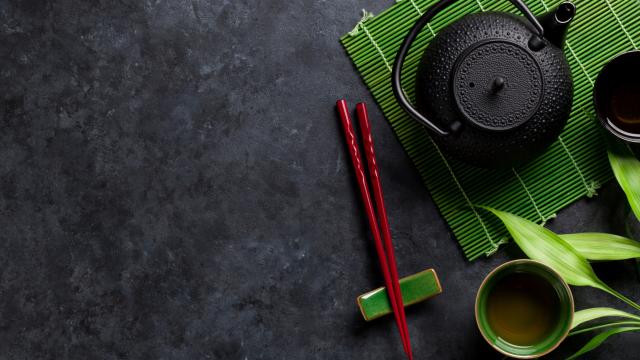Whether you’re more of a casual houseplant owner who’s happy if you remember to water it, or are so serious about your plants that it’s part of your personality, it’s always good to have a few tricks up your sleeve. This one comes courtesy of Emma Loewe at MindBodyGreen, and involves something you probably already have in your kitchen drawers: chopsticks. Here’s what to do.
Why aerate the soil?
Over time, your plants’ soil can get heavy and compacted with regular watering. According to Loewe:
Observant plant parents have likely noticed that potted soil becomes denser and harder to the touch over time. It may even absorb less moisture, leaving little puddles of water on its surface. This is the result of a natural process called soil compaction, in which soil compresses after repeated watering. Compressed soil is full of roadblocks that keep water and nutrients from reaching roots, so it can eventually delay plant growth.
Outdoors, worms are able to work their magic and break up the dirt, adding air as they go. But inside, you probably don’t have worms. And that’s where chopsticks come in.
[referenced id=”832041″ url=”https://www.lifehacker.com.au/2018/04/how-houseplants-can-make-you-more-tidy/” thumb=”https://www.gizmodo.com.au/wp-content/uploads/sites/4/2018/04/14/daklnuniznbkccrdhylf-300×169.png” title=”How Houseplants Can Make You More Tidy” excerpt=”I am not always the most attentive person when it comes to matters of the home. “What do you mean you’re supposed to clean the ceiling fan and the light switches and the oven racks? Who does that?” So you would think having houseplants around would be a disastrous idea.”]
How to use chopsticks to aerate soil
First of all, figure out if your plant is one that thrives in hard soil, or prefer their dirt on the softer side. Succulents tend to do well in compacted soil, but leafy plants (like philodendrons, monsteras, pothos, etc.) like some air with their dirt.
Darryl Cheng, plant pro and author of New Plant Parent, tells MindBodyGreen that he uses a chopstick to determine how compacted — and in some cases, dry — the soil has become. If a leafy plant’s dirt has gotten hard, Cheng will gently poke the soil with the chopstick until it reaches the bottom of the pot, and then swirl it around to add some air. Two or three chopstick prods around the perimeter of the plant is plenty.
But if you find that the chopstick is getting caught on something, find a new spot, because you may have hit the roots. If that happens, don’t worry about it too much, because roots are pretty sturdy. After you’ve introduced some air, it’s time to water the plant.

Leave a Reply
You must be logged in to post a comment.